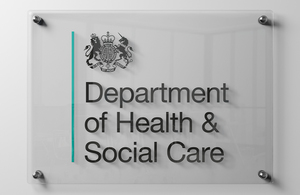Carbon monoxide poisoning sends 4,000 people to A&E each year
Professor Dame Sally Davies highlights the serious health impact of carbon monoxide poisoning.

To mark the start of Carbon Monoxide Awareness Week today, the Chief Medical Officer is highlighting the serious health impact of carbon monoxide poisoning.
Professor Dame Sally Davies, Chief Medical Officer for England, said: “Carbon monoxide is a silent killer which leads to 50 deaths every year.
“We can all prevent these avoidable tragedies by making sure gas and fuel appliances are properly installed and maintained and fitting an audible carbon monoxide alarm that meets European Standard EN 50291.
“As temperatures begin to drop and we turn the heating up, we should all be vigilant and check heating appliances are working properly and are well ventilated.”
Recent analysis revealed the hidden toll, each year, from this dangerous invisible gas:
- 4,000 people go to A&E
- 200 people are hospitalised
- there are around 50 deaths in England and Wales
The symptoms and the effects
As the Chief Medical Officer says: “The symptoms of carbon monoxide poisoning are very similar to those for flu and food poisoning including persistent headaches, sickness and tiredness.
“So if you start to feel unwell: Think carbon monoxide - and consult your GP or speak to NHS Direct by calling 0845 4647 as quickly as you can.”
Carbon monoxide poisoning can be difficult to spot. The symptoms can be confused easily with flu or food-poisoning. If people are given advice to go home, wrap-up warmly and turn up the heating, this can lead to fatal consequences.
The new estimate of 4,000 attendances at A&E is of concern as prolonged exposure to levels that produce only minor symptoms may, in some cases, be associated with lasting neurological effects, such as memory loss and difficulties in concentrating.
What leads to carbon monoxide poisoning?
Carbon monoxide is released when a carbon-containing fuel such as gas, oil, coal, coke, petrol or wood, does not burn fully because not enough air is available. The majority of cases of carbon monoxide poisoning are due to faulty combustion heating and cooking appliances.
Winter is the season when incidences are at their height. Awareness of carbon monoxide poisoning at A&E’s and GP surgeries can save lives and prevent injury.